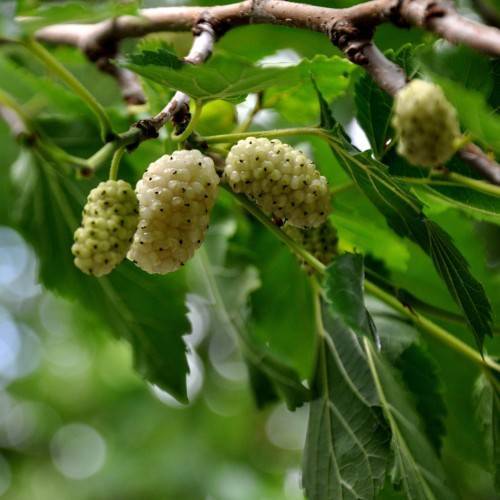
white mulberry
Morus alba Doguwa
Cycle:
Perennial
Watering:
Average
Hardiness Zone:
5 - 8
Flowers:
Flowers
Sun:
Full sun,part shade
Fruits:
Fruits Ready In Summer
Edible:
Yes
Leaf:
Yes
Growth Rate:
Low
Maintenance:
Moderate
Drought Tolerant:
Yes
Salt Tolerant:
Yes
Care Level:
Medium
watering
White mulberry (Morus alba Doguwa) should be watered when the top inch of the soil is dry, usually about once or twice per week. You should provide approximately 1 inch of water at each watering. Too little water will cause leaves to wilt and may stunt growth. Too much water can cause some root rot.
sunlight
White mulberry (Morus alba Doguwa) requires approximately 6-8 hours of direct sunlight per day. These trees should be planted in an area that receives full or partial sun, where the tree will be exposed to sunlight for at least 6 hours a day. Ideal locations for growing white mulberry trees include decks, patios, and in well-drained soil that receive plenty of direct sunlight. Mulberries do well when they are exposed to early morning sun and afternoon shade to help protect them from the harsh summer heat. If your white mulberry is not receiving adequate sunlight, the leaves may become pale and the tree may fail to produce adequate fruits.
pruning
White mulberry (Morus alba Doguwa) should be pruned when the plant is dormant, typically in late winter or early spring. Depending on the size or desired shape of the tree, pruning can range from heavy pruning to light shaping. With heavy pruning, branches of up to 1-third of the branches’ total length can be removed. Light shaping involves simply fixing any crossed branches or unruly growth at the ends of the branches. All pruning should be done with clean, sharp pruning shears to ensure that branches are cut cleanly. Pruning should be done while the tree is dormant, as pruning during the growing season can reduce fruit production.
